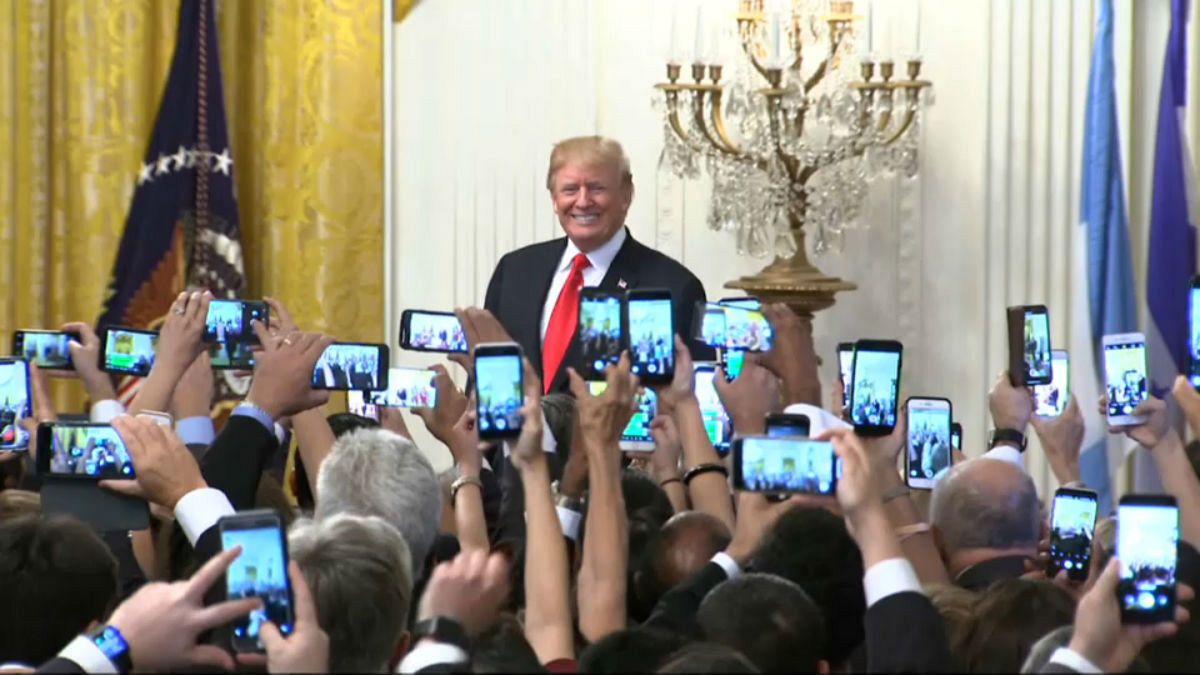The US-China trade war looks set to escalate and there are warnings of consumer price rises, after the White House announced tariffs on $200bn of Chinese goods.
The United States imposed new tariffs on Chinese goods on Monday as President Donald Trump’s trade war with Beijing saw China slap retaliatory measures a day later.
The US announced tariffs of 10 percent will be imposed on $200 billion (€171 billion) worth of imports from September 24, rising to 25 percent on January 1.
Consumer goods feature strongly on the latest list — although following lobbying from retailers and technology giants, some items expected to be on the list have been excluded.
Beijing swiftly retaliated, announcing on Tuesday that new tariffs would be slapped on $60 billion (€51 billion) worth of American goods.
What is on the new list?
The latest round of US tariffs is the biggest so far, imposing higher taxes on nearly 6,000 Chinese items.
They include consumer products such as luggage and handbags, textiles including cotton and other fabrics, household items such as cutlery and towels, and food including rice.
The overall list of Chinese goods subject to tariffs now runs to 194 pages, and amounts to almost half of all Chinese imports.
It could have been longer: some 300 product categories were removed from the list following lobbying from the retail industry and strong opposition from technology giants.
Off the list have come items such as bicycle helmets, high chairs and baby car seats, as well as smartwatches and devices using Bluetooth communications.
Apple had warned publicly against the impact of tariffs, however, the iPhone is expected to be included next time should the Trump administration impose further duties.
Some products affecting smaller technology companies have been left on the list. Eero, a startup making home routers, had asked to be exempted — to no avail.
Why has Trump moved now?
The president had already announced tariffs on $50 billion (€43 billion) worth of Chinese goods since July in two phases.
The latest round came after talks between the world’s two largest economies produced no results.
Donald Trump says the new move is in line with an ongoing study by the United States Trade Representative (USTR). In a White House statement, he accuses Beijing of having failed to change “numerous unfair policies and practices relating to United States technology and intellectual property – such as forcing United States companies to transfer technology to Chinese counterparts.”
The president — who had given a strong signal of his latest intentions in a tweet early on Monday — says it is his “duty to protect the interests of working men and women, farmers, ranchers, businesses, and our country itself”.
Will consumers see price rises?
Technology and retail groups had argued that the tariffs would hit consumers hard.
“President Trump’s decision to impose an additional $200 billion is reckless and will create lasting harm to communities across the country,” said Dean Garfield, president of the Information Technology Industry Council, representing major tech firms.
“Tariffs are a tax on American families, period,” said Hun Quach, vice president for international trade from the Retail Industry Leaders Association (RILA). It has pointed out that the new duties will hit household products including gas grills, travel bags, mattresses and vacuum cleaners.
American firms have previously warned they are worried about the effect of higher costs, saying they could bring job cuts.
The tariffs could also have a negative impact on Trump himself, as Americans prepare to vote in mid-term elections in November.
Economists at financial firm Citi warned in late July that Chinese tariffs would particularly impact so-called red states — those who have historically voted Republican — which are more likely to produce goods exported to China including pork and soybeans.
"Every region of the US is affected by trade dispute intensification, but the data suggest that voters living in states that supported President Trump in 2016 may bear the brunt of the negative repercussions of heightened tensions and the imposition of retaliatory measures," Dana Peterson, Citi's North American economist, said in a note.
Is the trade war set to escalate?
China quickly retaliated, making good on its threat, issued last month, that it would target $60 billion (€51 billion) worth of American goods should Washington go ahead with new tariffs, which Trump had just announced.
The list of US goods soon to be hit with additional duties ranges from liquefied natural gas to aircraft. Just like their American counterparts, they will kick in on September 24.
China's Ministry of Commerce said it aspires to maintain a "mutually beneficial trade relationship" with the US and called on American authorities to stop creating "trade frictions."
There appears little hope that international bodies such as the World Trade Organization could prevent an escalation. Donald Trump has previously threatened to leave the WTO if it doesn’t “shape up” and treat the US better — and his administration seems to be in little mood to de-escalate the situation.
Former European Union trade commissioner Peter Mandelson told Bloomberg TV that the Trump administration appeared to be trying to change Chinese industrial policy, and was unlikely to succeed. He predicted a “painful few years” ahead for businesses.
The Chinese leadership under President Xi Jinping is gripped by its own nationalist mood, which according to at least one commentator means that Beijing is highly unlikely to back down.
